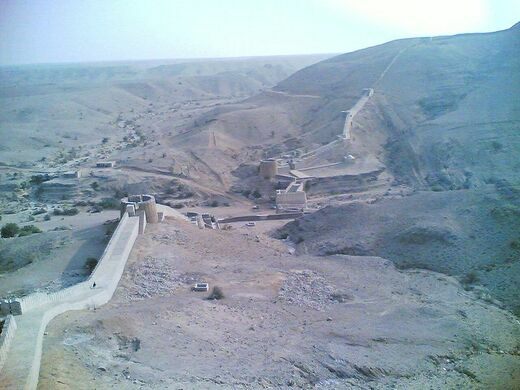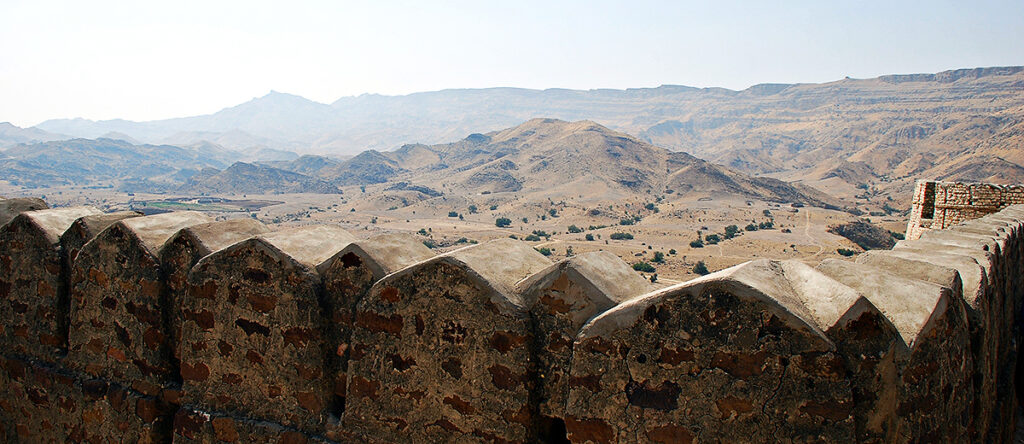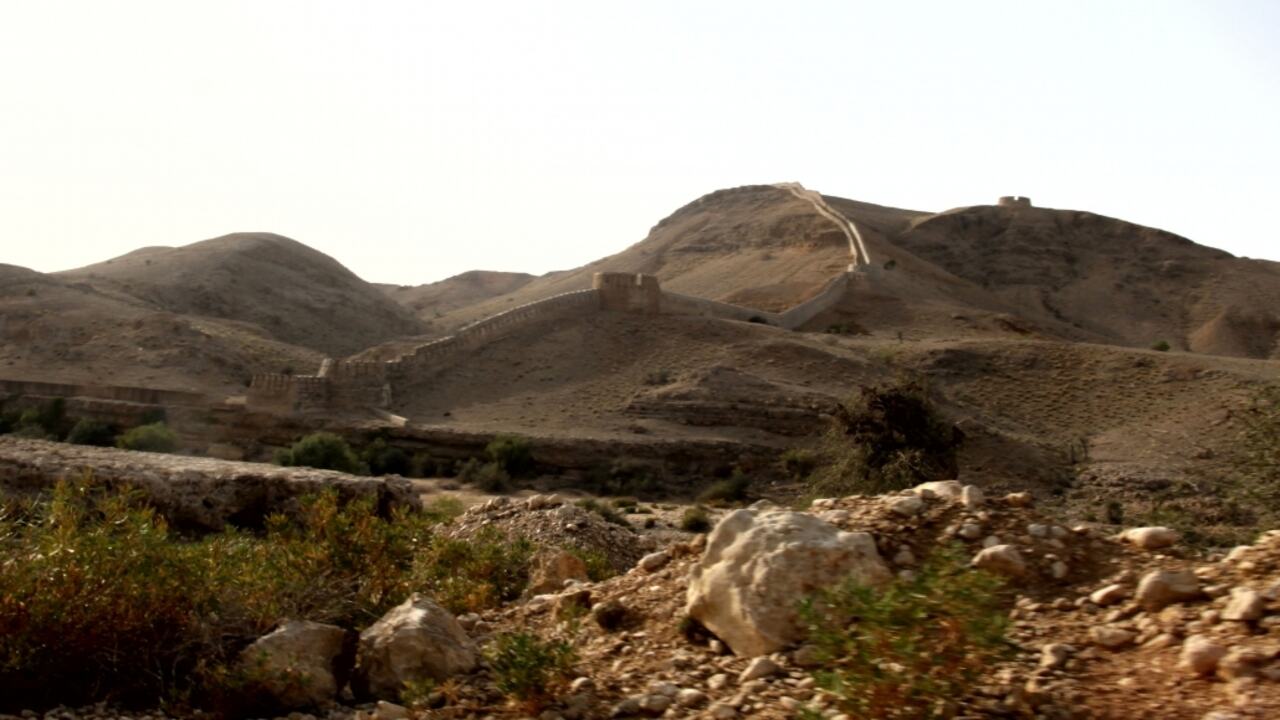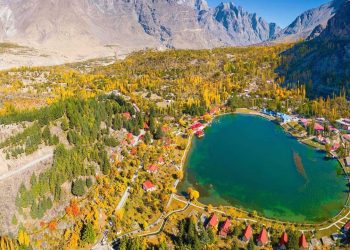Ranikot is the “Great wall of Sindh”, it is is believed to be the world’s largest fort, with a circumference of approximately 32 kilometres (20 mi).

About seventy five miles north-west of Hyderabad on barren range of hills, a gigantic fortification wall runs up and down the contours of the country. The wall which is over 22 miles in length encircles hillocks which appear to have never been inhabited by any regular population. This wall and the barren hills inside make the Rani Kot Fort. The fort lies about 18 miles west of the Railway Station Sann on the Kotri-Larkana line of the Pakistan western Railway. A very sandy and rough track connects it with the Indus highway near the Sann Railway Staion.
There is not much written record to throw light on this fort. From the scanty record available its comes to light that the fort was built in the first quarter of 19th century A.D. by the Mirs’, obviously to resist the pressure of the British forces over Sindh. It was also meant to serve as a stronghold and a place of refuge for the Mirs in case they could not control the march of the British. From a general survey of the fort it becomes obvious that the builders could not have utilized it to their wishes or made use of the fort for which it had been built. It seems the irony of fate that the British took over Sindh even before the completion of the fort.
The fort was planned and constructed under the supervision of Nawab Wali Mohammad Khan Leghari, the prime Minister of Sindh in 1234 A.H./1819 A.D. it was named after a torrent (Rani Nai) which was the main source of supplying water to the whole area.
The bed of a seasonal torrent on the eastern side serves as the main approach to the Rani Kot Fort. The remains of a bridge over it are clear. The fortification wall, built with solid stone, runs north south from both banks of the torrent bed. The fortification wall, which follows the natural contours of the hilly area, has solid semi-circular bastions at intervals.

The fortification wall runs on the three sides of the area while on the northern side the lofty peaks of the higher hillocks serve as a rampart.






